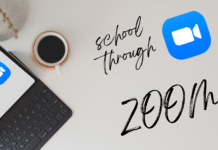Most of you have probably heard of the growing social media app VSCO, or have at least seen it linked in somebody’s Instagram bio. VSCO is an app that was created in 2011 as a platform for photographers to post their pictures. The app’s developers promoted themselves as “an art and technology company empowering people everywhere to create, discover, and connect” and “a community for expression.”
VSCO was once this community full of beautiful photos. It was a place where likes and follows did not matter. In fact, they did not even exist. Because of this, people felt more comfortable posting whatever they wanted. Nobody posted for feedback, they posted for themselves. It was a freeing atmosphere. However, most social media users preferred platforms such as Instagram, Twitter, and Facebook. Why? Because, these websites had feedback features. Not only were people posting photos, they would receive likes, favorites, retweets, and comments afterwards. VSCO decided to hop on this train in 2017.
Following the new “favorite” feature, they added the “share” feature as well. The app noticed how they were different from the others, and changed their weaknesses. Now, the majority of apps have different appearances, but the same ideas.
What were the results of VSCO’s new features?
Obviously, there was an increase in the amount of app users due to the company adding a feedback feature. People think that likes and follows govern our generation and recent studies have suggested that receiving likes or follows activates the reward center in our brain.
“A recent study has discovered a strong connection between Facebook and the brain’s reward center, called the nucleus accumbens. This area processes rewarding feelings about things like food, sex, money and social acceptance.” (Buffer.com)
When we receive constant reward from an application, how could we not give into that. It makes complete sense that people prefer such apps rather than apps that don’t offer that feeling of accomplishment.
Because so many people started to use VSCO, the atmosphere of the app seemed to change along with its popularity. Users went from posting their photography, to pictures with friends, quotes, and selfies.
Now that it has become a “mainstream” application, there is a stereotype of people who use the app. VSCO went from being unique to basic and so did its users. The typical VSCO user, you may find, is usually called a “VSCO girl.” But what exactly is a “VSCO girl”?
A “VSCO girl” is a teenage girl who thinks that conforming to fads makes them artsy. Imagine a version of the basic person who wears Uggs and drinks Starbucks. “VSCO girls” are this person multiplied by one hundred. They now wear Birkenstocks, drink Starbucks through reusable straws, and carry around Hydro Flask water bottles. “VSCO girls” are often seen as a basic white girl trying to fit in with the rest of them.








